- Home
- Neil Gaiman
The View from the Cheap Seats Page 29
The View from the Cheap Seats Read online
Page 29
* * *
My introduction to The New Annotated Dracula, annotated by Leslie S. Klinger, 2008.
* * *
Rudyard Kipling’s Tales of Horror and Fantasy
Years ago, back when I was just starting to write Sandman, I was interviewed by some long-defunct magazine, and in the interview I was asked to name some of my favorite authors. I listed happily and with enthusiasm. Several months later, when the interview had been printed, a fan letter arrived at DC Comics for me, and was forwarded to me. It was from three young men who wanted to know how I could possibly have listed Kipling as a favorite author, given that I was a trendy and enlightened young man and Kipling was, I was informed, a fascist and a racist and a generally evil person.
It was obvious from the letter that they had never actually read any Kipling. More to the point, they had been told not to.
I doubt I am the only person who writes replies to letters in his head he never sends. In my head I wrote many pages in reply, and then I never wrote it down or sent it.
In truth, Kipling’s politics are not mine. But then, it would be a poor sort of world if one were only able to read authors who expressed points of view that one agreed with entirely. It would be a bland sort of world if we could not spend time with people who thought differently, and who saw the world from a different place. Kipling was many things that I am not, and I like that in my authors. And besides, Kipling is an astonishing writer, and was arguably at his best in the short story form.
I wanted to explain to my correspondents why “The Gardener” had affected me so deeply, as a reader and as a writer—it’s a story I read once, believing every word, all the way to the end, where I understood the encounter the woman had had, then started again at the beginning, understanding now the tone of voice and what I was being told. It was a tour de force. It’s a story about loss, and lies, and what it means to be human and to have secrets, and it can and does and should break your heart.
I learned from Kipling. At least two stories of mine (and a children’s book I am currently writing) would not exist had he not written.
Kipling wrote about people, and his people feel very real. His tales of the fantastic are chilling, or illuminating or remarkable or sad, because his people breathe and dream. They were alive before the story started, and many of them live on once the last line has been read. His stories provoke emotion and reaction—at least one of the stories in this volume revolts me on a hundred levels, and has given me nightmares, and I would not have missed reading it for worlds. Besides, I would have told my correspondents, Kipling was a poet, as much a poet of the dispossessed as he was a poet of the empire.
I said none of those things back then, and I wished that I had. I’ve said them now, to you. Trust the tale, not the teller, as Stephen King reminded us. The best of Rudyard Kipling’s tales are, simply, in the first rank of stories written in the English language. Enjoy them.
* * *
This is the introduction to Rudyard Kipling’s Tales of Horror and Fantasy, edited by Stephen Jones, 2008.
* * *
From the Days of Future Past: The Country of the Blind and Other Stories, by H. G. Wells
H. G. Wells, Bertie to his parents and H. G. to his friends, was, with Jules Verne, the person who gave us the scientific romance—the forerunner of that branch of literature we now know as science fiction. His short stories, and his proto-science fiction novels, have lasted and are still read today, while many of the mainstream novels he considered more important and significant are gone and, for the most part, forgotten, perhaps because the novels were very much of their time, and swallowed by the change in time, while some of the science fiction and fantasy novels and tales are, for all their late Victorian or Edwardian settings, quite timeless.
Wells’s novels set a pattern. The madman on his island making people out of animals, the journey through time or into space, all have been imitated, consciously or unconsciously, ever since, taken as templates for stories by hundreds, perhaps thousands of other authors: the arrival in a small Sussex village of an Invisible Man—his self-imposed confinement to his room, the brilliant but forgettable hero barely introduced until we are past the hundredth page, the revelation and explanation of poor, mad albino Griffin, is not just the story of The Invisible Man, but it is the shape, the recipe for a thousand other stories in which there are Some Things Mankind Was Not Meant to Know, in which the borders between science and madness are frayed. Wells’s science fiction books are novels of ideas as much as they are novels of people; while arguably they are also all novels of class, either metaphorically (as Dr. Moreau creates an underclass of beast-men in The Island of Dr. Moreau; or The Time Machine’s Traveler encounters in the distant future an effete upper class and a monstrous lower class) or literally—crazy Griffin is a lower-middle-class creature out of his depth.
The short stories, for the most part, tend to be something else. Something unique to Wells.
It has been said that the Golden Age of science fiction is when you were twelve years old, and it could certainly be argued that Wells wrote his short stories for twelve-year-olds, or for the twelve-year-olds inside adults. His fabulism tends to be asexual, unproblematic, straightforward. (A personal admission: I read most of these stories first as an eleven-year-old boy. I found a thick, red-covered collection of The Science Fiction Short Stories of H. G. Wells on a shelf in a schoolroom and read it several times over the next two years, fascinated and transported. The tales were old, undoubtedly, but they did not feel dusty or anachronistic or even outdated. The flowering of the strange orchid disturbed me and the unsatisfactory nature of the Magic Shop left me wondering. It was good.)
These are tales of obsession and revelation and discovery. Some of them swash, sometimes, buckle and adventure. Mostly, however, they remind us that they are, in some sense, eyewitness reports, with all the limitations and power of such. We are told repeatedly what was seen, and only a little more, and left to draw our own inferences. We are left to wonder. Was a man translated through the fourth dimension, and did he see hungry spirit-creatures there? Was that what he truly saw? Did man-eating cephalopods come ashore on stolid British beaches, to feast on human flesh? What was seen worshipping in the depths of the ocean abyss? How did the crystal egg arrive in the shop, and where is it now? We know only what was seen, and that, in its way, is convincing.
There is an old saw that in a short story one thing happens. Wells’s short stories exemplify this. His writing is effective: as good as it needs to be, with little in the way of grace notes. Still, the best of them are haunting in their implications.
All too often they are tales of failed revelation. In Wells’s world the fruit of the tree of knowledge is not eaten—not because of fear or difficulty, but because of embarrassment—and over and again knowledge or something equally as magical (the secret of making diamonds, an egg that shows us life on Mars, the formula for invisibility) is lost to the world. At the end of many of these stories the world is unchanged, and yet it could have been changed utterly and irrevocably. If one of the social functions of science fiction is to prepare us for change, Wells’s stories began that process. Darwin adumbrated change. Wells was a scientist or at least, when young, a science teacher and science writer, taught by a disciple of Darwin’s, and he was not scared by ideas or by the practicalities of science. Wells used his fiction to illuminate change, celebrating it as he warned of what change could mean.
The most successful Wells short stories are not what we today would view as stories, not really. They are anecdotes and journalism: carnivorous squid arrive in a tale that feels like an article from a turn-of-the-century scientific paper, while the ants, armed with poison, conclude their tale fifty years away from arriving in Europe (in those slow, comfortable days before container ship and jet plane). It’s not a weakness—indeed, it’s where these stories derive a significant amount of their power and effect from, and it’s one of the places that these stories can be seen as early
branches on the science fiction family tree: part of SF is the literature of ideas, and several of these stories are almost pure idea, uncluttered by plot or narrative. Still, by today’s standards (and those of the time Wells was writing) this was not on. They were not proper short stories—a criticism that Wells took to heart in his 1911 introduction to The Country of the Blind and Other Stories, when he says,
We suffered then, as now, from the à priori critic. Just as nowadays he goes about declaring that the work of such-and-such a dramatist is all very amusing and delightful, but “it isn’t a Play,” so we had a great deal of talk about the short story, and found ourselves measured by all kinds of arbitrary standards. There was a tendency to treat the short story as though it was as definable a form as the sonnet, instead of being just exactly what anyone of courage and imagination can get told in twenty minutes’ reading or so. It was either Mr. Edward Garnett or Mr. George Moore in a violently anti-Kipling mood who invented the distinction between the short story and the anecdote. The short story was Maupassant; the anecdote was damnable.
It was a quite infernal comment in its way, because it permitted no defence. Fools caught it up and used it freely. Nothing is so destructive in a field of artistic effort as a stock term of abuse. Anyone could say of any short story, “A mere anecdote” just as anyone can say “Incoherent!” of any novel or of any sonata that isn’t studiously monotonous. The recession of enthusiasm for this compact, amusing form is closely associated in my mind with that discouraging imputation. One felt hopelessly open to a paralysing and unanswerable charge, and one’s ease and happiness in the garden of one’s fancies was more and more marred by the dread of it. It crept into one’s mind, a distress as vague and inexpugnable as a sea fog on a spring morning, and presently one shivered and wanted to go indoors . . . It is the absurd fate of the imaginative writer that he should be thus sensitive to atmospheric conditions.
Wells seems painfully aware here that many of his most effective short stories were not explorations of character and event, and was uncomfortable with this. He need not have been. The truth is that they work because they lack, sometimes, plot, often, character. What they have instead is brevity and conviction. Arthur Conan Doyle’s eleven-thousand-word story “When the World Screamed” (1928) in Wells’s hands would have been a journalistic report of half the length, devoid of people. It would have been only about the event. The world of the finest of Wells’s short stories is one of possibilities, of breakthrough in science or society or of the Unknown which changes the world.
The stories, particularly the more fantastic of them, are most easily read as if they were postcards from an alternate future that is already past. Many of these stories are about futures and changes that have long since been carried away by time and memory: it is hard to remain on the cutting edge well over a century after the stories were written.
Wells described the art of the short story as “the jolly art of making something very bright and moving; it may be horrible or pathetic or funny or beautiful or profoundly illuminating, having only this essential, that it should take from fifteen to fifty minutes to read aloud. All the rest is just whatever invention and imagination and the mood can give—a vision of buttered slides on a busy day or of unprecedented worlds. In that spirit of miscellaneous expectation these stories should be received.”
And that suggestion holds as true now as when he wrote it.
(THE READER IS advised that some plot details are given away in this section.)
‘The Lord of the Dynamos”—Here we meet the New Theology, in a tale of “a blackleg, and Azuma-zi, who was a mere black.” Azuma-zi, come to England from the East, sees the Dynamo as “greater and calmer even than the Buddhas he had seen at Rangoon.” A reminder of attitudes and language we would no longer view as reasonable, and a story that presaged one of the themes of science fiction; that our machines, if we permit them, can become our gods.
“The Remarkable Case of Davidson’s Eyes”—An example of Wells’s technique of presenting the reader with an impossibility and then buttressing it with just enough detail to convince.
“The Moth”—Science fiction in that it is a fiction about scientists, but it takes on the mantle of a ghost story and then, in its view of the descent into madness, shades gently into the weird tale. As our scientist accepts that only he can see the moth he embraces his madness, and that is true horror.
“A Catastrophe”—A heartbreakingly biographical story, but one that gives a happy ending to a world that in Wells’s own life ended in disaster. A what-if story. In reality Wells’s father lost his shop, his mother went into service. Here is fiction as time-travel, a way to fix the unfixable.
“The Cone”—A small, tragic, eternal triangle (a cone is a triangle in three dimensions). Reminiscent of the tales of horror and revenge told in the American EC Comics line in the 1950s, in which a metaphor is taken literally and lethally: blood boils in the veins of both the artist and the cuckolded husband, and in the case of one of them it is not merely a figure of speech. With its machinery dominating the landscape, the story reminds us of “Lord of the Dynamos,” and the end can be seen as a similar act of sacrifice.
“The Argonauts of the Air”—A small piece of science fiction, now consigned forever to an alternate past. A fascinating little story in which Wells’s every guess and instinct was wrong, save for his understanding that mankind would be traveling by air, and sooner than most people believed. Despite the death at the end of the story, this is not shaped as a tragedy. This could be a space flight story, a little too early. While Wells was wrong about the early days of heavier-than-air flight—it wasn’t a millionaire’s game, but a relatively cheap playing field—he would have been right about space travel, which is a billionaire’s game of the kind where one can imagine the gilding of aluminum.
“Under the Knife”—A death that crosses the universe, in a story that is predicated upon changes in scale, as we gaze upon the handiwork, and the hand (although not the face), of God.
“A Slip Under the Microscope”—SF in the sense that it is a fiction with scientists in it; a fiction that reminds us of Wells’s own early failure to graduate. Again, in every sense, a tale of class. Again, a tale of rivalry, here played out as a morality play in which success and failure mean two very different things to two very different people.
“The Plattner Story”—again, an anecdote, in which we find ourselves convinced of its truth by the initial shock of the reversal of right-and-left-handedness of things, as if Plattner has been mapped through another dimension and returned to us in mirror-form (the branch of chemistry known as chirality). We see ghosts and a nine days’ wonder (there are many nine days’ wonders in Wells’s tales—Here, we are told in one way or another, several times, as the stories begin, is something remarkable—something that has already been replaced in the imagination of the populace, and now I shall tell you something about it you did not know).
“The Story of the late Mr. Elvesham”—A body swap tale, as poor Eden is subsumed into the mysterious Mr. Elvesham. It’s proto-SF that shades into pure horror.
“In the Abyss”—Again, a fragmentary, almost anecdotal piece, in which we gain a glimpse of a world deep beneath our own, and lose it once more.
“The Sea Raiders”—A tale I last read when I was twelve or thirteen. I remember the fear I felt then at the incursion of something deeply alien and dangerous in places I knew and was familiar with. Another battle in the War of the Worlds, although the threat comes from below, not from Mars. The style is journalistic, the intent purely to convince. The inconclusive nature of the ending adds to the feeling that this happened, or could have happened, just as Wells describes.
“The Crystal Egg”—The nature of seeing is a theme that echoes through many of Wells’s short stories and here (as in “The Remarkable Case of Davidson’s Eyes”) we encounter seeing at a distance. Once more a revelation that is only partially revealed, wrapped in a series of mysteries and, eventually, lo
st due to human fallibility, not malevolence. The glimpse of another world the tale (and the Egg) gives us is otherworldly and haunting, and poor Cave, the small businessman on the edge, sustained by his visions of another world, is a perfectly Wellsian character, giving an odd humanity to what would otherwise be an anecdote about an interplanetary television before its time.
“A Story of the Stone Age”—Now an almost forgotten story, it feels like an aborted novel, one that should have continued. Wells is an early explorer of a genre that others have returned to over the years—that of conceptual breakthrough in Stone Age man, in a time when all ideas are new. The hero becomes the first man to ride a horse, and he creates an early doomsday weapon, a club inset with lion’s teeth. While the story he gives us is satisfying, it still reads like something Wells meant to go back to and complete, a book that would have been the Clan of the Cave Bear of its day.
“The Star”—Wells enjoys changing scale, the slow pull back from the personal to the cosmic, and employs the technique here to great effect.
“The Man Who Could Work Miracles”—Justly famous, often dramatized—this story has been a film, and adapted many times for television and radio. Like many of Wells’s fantasies, it loops back to where it began.
“A Dream of Armageddon”—Wells built a “future history”— a consistent history of the future, in which he set several stories. This tale of a dream of events that have not yet happened, of future war and political and personal disaster, and of death, fits vividly into that history.

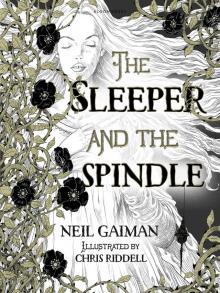 The Sleeper and the Spindle
The Sleeper and the Spindle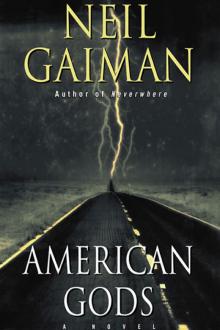 American Gods
American Gods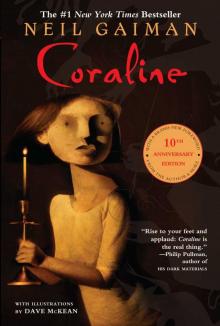 Coraline
Coraline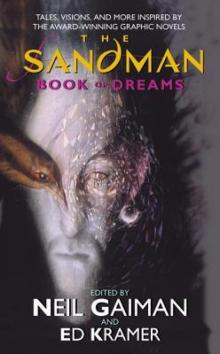 The Sandman: Book of Dreams
The Sandman: Book of Dreams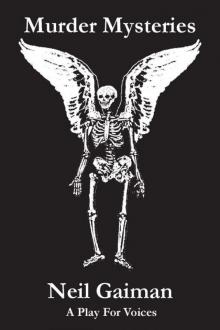 Murder Mysteries
Murder Mysteries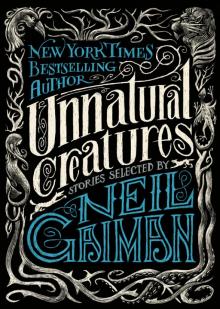 Unnatural Creatures
Unnatural Creatures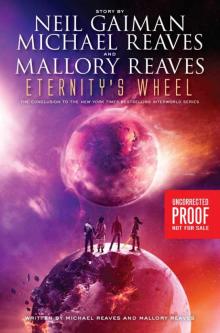 Eternity's Wheel
Eternity's Wheel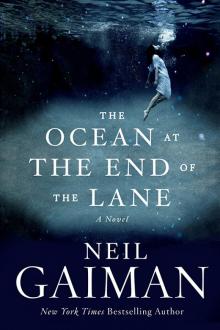 The Ocean at the End of the Lane
The Ocean at the End of the Lane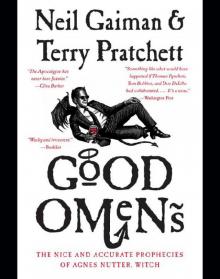 Good Omens
Good Omens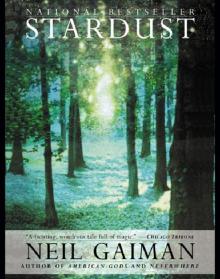 Stardust
Stardust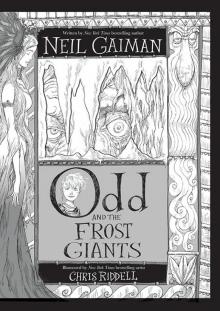 Odd and the Frost Giants
Odd and the Frost Giants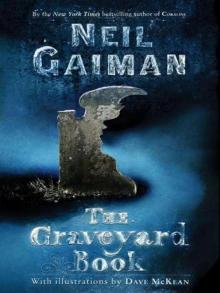 The Graveyard Book
The Graveyard Book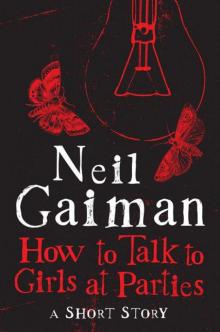 How to Talk to Girls at Parties
How to Talk to Girls at Parties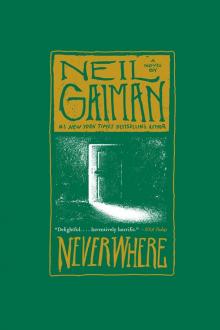 Neverwhere
Neverwhere Snow, Glass, Apples
Snow, Glass, Apples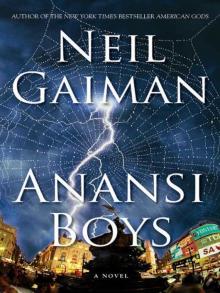 Anansi Boys
Anansi Boys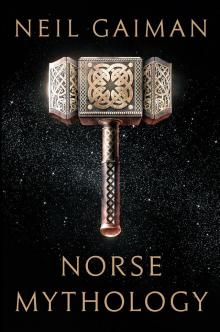 Norse Mythology
Norse Mythology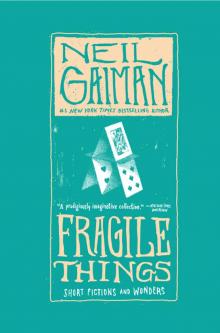 Fragile Things: Short Fictions and Wonders
Fragile Things: Short Fictions and Wonders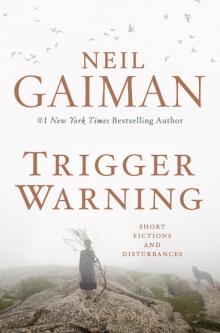 Trigger Warning: Short Fictions and Disturbances
Trigger Warning: Short Fictions and Disturbances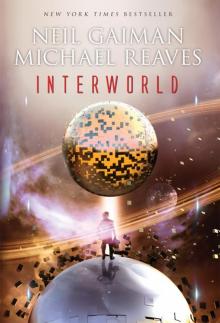 InterWorld
InterWorld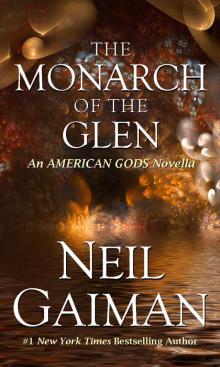 The Monarch of the Glen
The Monarch of the Glen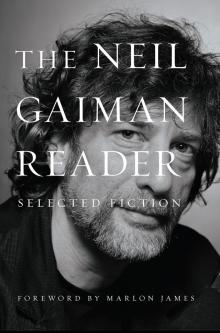 The Neil Gaiman Reader
The Neil Gaiman Reader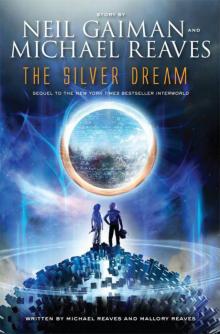 The Silver Dream
The Silver Dream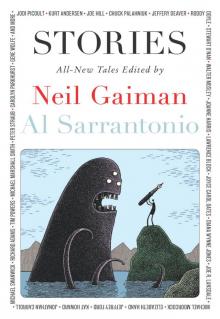 Stories
Stories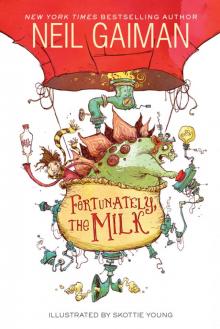 Fortunately, the Milk
Fortunately, the Milk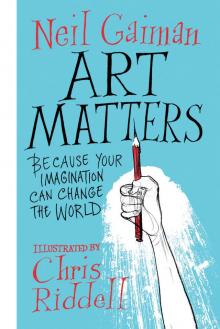 Art Matters
Art Matters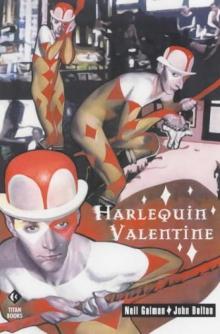 Harlequin Valentine
Harlequin Valentine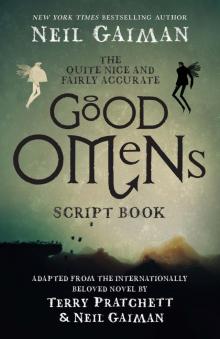 The Quite Nice and Fairly Accurate Good Omens Script Book
The Quite Nice and Fairly Accurate Good Omens Script Book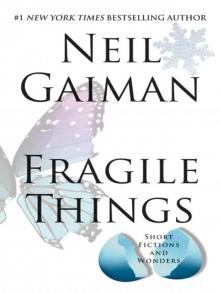 Fragile Things
Fragile Things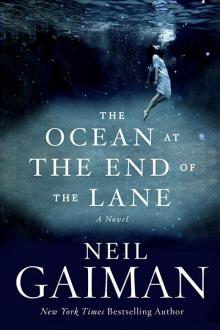 The Ocean at the End of the Lane: A Novel
The Ocean at the End of the Lane: A Novel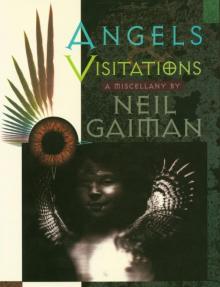 Angels and Visitations
Angels and Visitations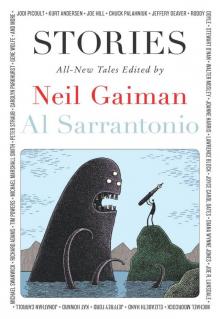 Stories: All-New Tales ngss-1
Stories: All-New Tales ngss-1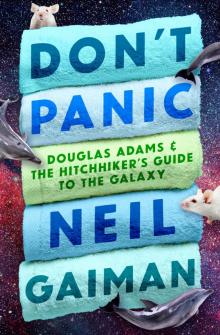 Don't Panic
Don't Panic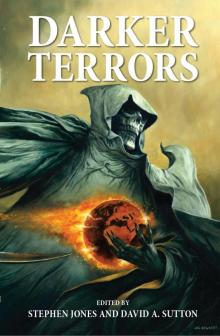 Darker Terrors
Darker Terrors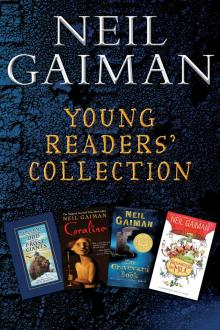 Neil Gaiman Young Readers' Collection
Neil Gaiman Young Readers' Collection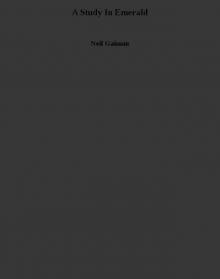 A Study In Emerald
A Study In Emerald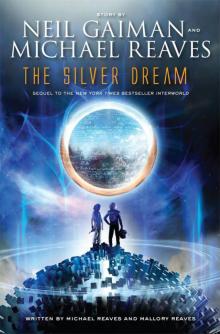 The Silver Dream: An InterWorld Novel
The Silver Dream: An InterWorld Novel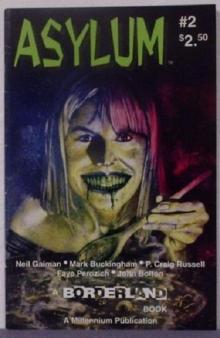 Feeders and Eaters
Feeders and Eaters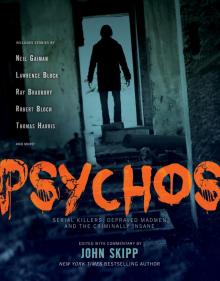 Psychos
Psychos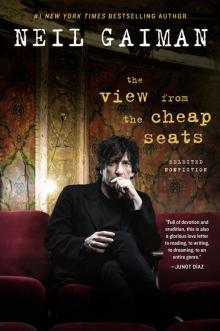 The View from the Cheap Seats
The View from the Cheap Seats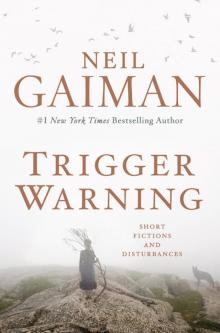 Trigger Warning
Trigger Warning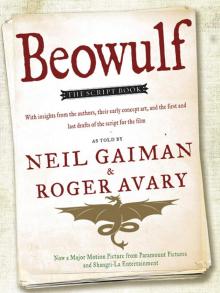 Beowulf
Beowulf Nessun Dove
Nessun Dove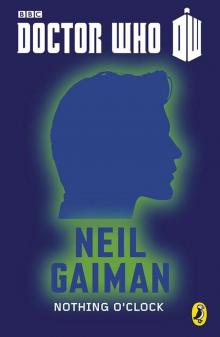 Doctor Who: Nothing O'Clock: Eleventh Doctor: 50th Anniversary
Doctor Who: Nothing O'Clock: Eleventh Doctor: 50th Anniversary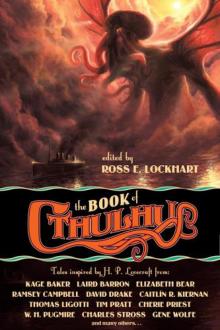 The Book of Cthulhu
The Book of Cthulhu